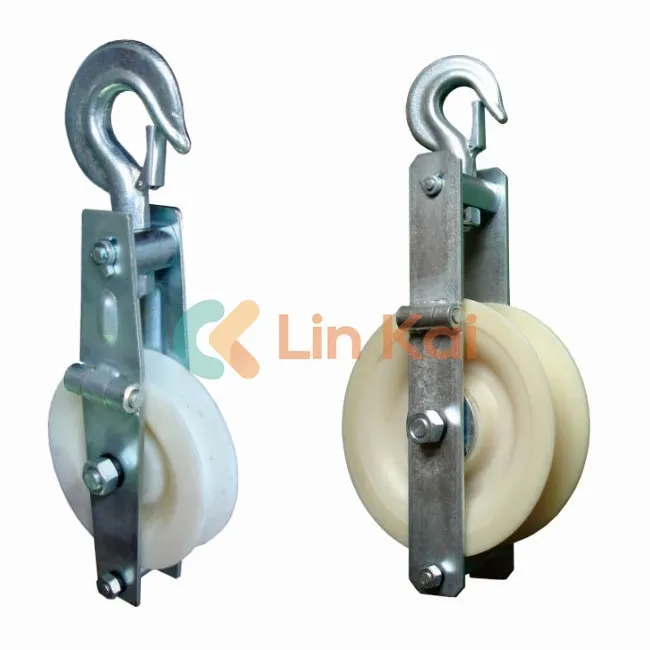What is the weight capacity of typical Stringing Blocks?
2024-11-25
The weight capacity of typical stringing blocks depends on their design, size, and the materials used in their construction. Stringing blocks are essential tools for installing electrical cables and conductors, and their capacity must accommodate the load imposed by the conductor's weight and tension. Here's an overview:
General Weight Capacity Ranges
1. Small to Medium Stringing Blocks:
Capacity: 25 tons (4,000–10,000 lbs)
Usage: Suitable for single conductors or lighter operations, such as in residential or lowvoltage installations.
2. HeavyDuty Stringing Blocks:
Capacity: 820 tons (16,000–40,000 lbs) or more
Usage: Designed for highvoltage transmission lines, bundled conductors, or largediameter cables.

Factors Affecting Weight Capacity
1. Block Material:
Aluminum alloy or highstrength steel is commonly used for heavy loads.
Nylon or composite materials are lighter and used for smaller loads.
2. Sheave Size and Material:
Larger sheaves reduce friction and can handle heavier cables.
Steel sheaves are more durable under high loads, while nylon sheaves are lighter for moderate uses.
3. Frame Strength:
Reinforced steel frames provide stability and higher loadbearing capacity.
4. Configuration:
Single Sheave Blocks: Lower weight capacity.
MultiSheave Blocks: Designed to distribute the load across multiple sheaves, increasing capacity.
5. Cable Type and Diameter:
Heavier and largerdiameter cables require blocks with higher capacity and more robust designs.
Usage and Safety Tips
Match Capacity to Job: Always choose a block with a capacity higher than the expected load to account for dynamic forces and safety margins.
Inspect Before Use: Check for wear, cracks, or damage to ensure safety.
Follow Manufacturer Guidelines: Adhere to specifications for load limits, proper installation, and usage.
Conclusion
Typical stringing blocks have weight capacities ranging from 2 tons to 20 tons or more, depending on their intended application. For precise requirements, consult the manufacturer’s specifications, as these can vary based on design and materials. Always prioritize safety by choosing blocks rated for the specific demands of your project.


